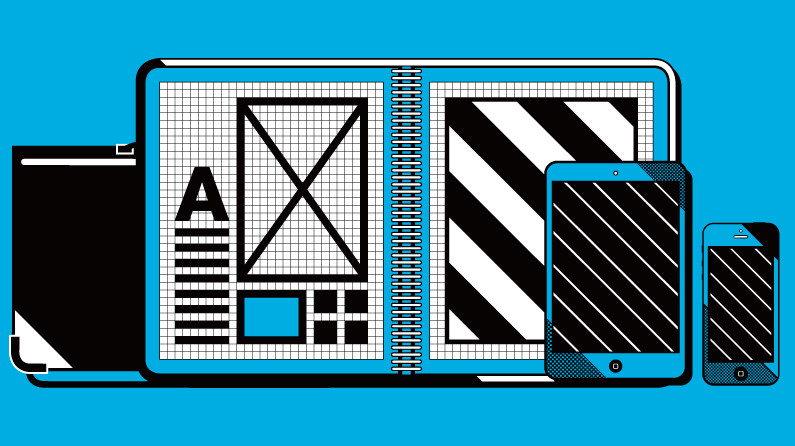In the highly competitive world of graphic design, a stunning portfolio is your ticket to success. Your portfolio is more than just a collection of your work; it’s a powerful representation of your skills, creativity, and unique style. So, let’s dive into the essential tips and tricks that will help you craft a killer graphic design portfolio that captivates your audience and opens doors to exciting opportunities in the design industry.

Understanding Your Target Audience
Before you embark on creating your portfolio, take a moment to identify your ideal clients or employers. Understanding your target audience allows you to tailor your portfolio to resonate with them. Consider the industries you want to work with and the design styles that align with their preferences. This knowledge will guide your project selection and presentation choices.
Showcasing Your Best Work
Quality over quantity is the golden rule when curating your portfolio. Handpick your top projects that exemplify your finest work. These projects should showcase your versatility, problem-solving prowess, and attention to detail. Remember, your portfolio is as strong as its weakest link, so be ruthless in selecting only the best.
To make a memorable first impression, create a visually impactful cover or introduction page. This initial glimpse should capture your audience’s attention and set the tone for what they can expect from the rest of your portfolio.
Organizing Your Portfolio
A well-organized portfolio is a pleasure to navigate. Group your projects into relevant categories or themes. This organization helps viewers find specific types of work they are interested in more easily. Whether you divide your portfolio by industry, project type, or design style, ensure that the structure is intuitive and user-friendly.
Craft a seamless navigation experience for viewers. Use intuitive menu design and clear labels to guide them effortlessly through your portfolio. You want them to focus on your work, not get lost in navigation confusion.
Telling Your Design Story
Everyone loves a good story, and your portfolio is an excellent place to tell yours. Use your design projects to weave a narrative that showcases your growth and progression as a designer. Describe the challenges you faced, the solutions you devised, and the impact of your work on the client or the target audience.
Highlighting Your Process
Behind every remarkable design lies a thoughtful process. Reveal the behind-the-scenes magic by including sketches, mood boards, or work-in-progress images. This not only adds depth to your portfolio but also demonstrates your problem-solving skills and creative thinking.
Diversity and Adaptability
Flexibility is a valuable asset in the design world. Demonstrate your versatility by showcasing diverse design projects. Whether it’s branding, illustration, web design, or print, the ability to tackle different challenges will impress potential clients or employers. Emphasize your adaptability to different design aesthetics and client preferences.
Maintaining Visual Consistency
While diversity is important, maintaining visual consistency in your portfolio is equally crucial. Your portfolio should reflect your signature style and design sensibility. Strive to strike the right balance between variety and coherence. This consistent thread will tie your portfolio together, making it a memorable and unified body of work.
The Impact of Details
In the design world, attention to detail is everything. Sweat the small stuff and ensure your portfolio is polished to perfection. Double-check for typos, alignment issues, and any other potential errors. A meticulously crafted portfolio reflects your professionalism and dedication to your craft.
Utilize high-quality images to enhance the visual impact of your work. Low-resolution images can undermine the quality of your designs. Investing in high-quality visuals shows that you take your work seriously.
Adding Context and Descriptions
Every project in your portfolio should be accompanied by brief yet insightful descriptions. Introduce each project, providing context about the client, their needs, and your design objectives. Explain your design choices, the thought process behind them, and how your work made a difference for the client or their target audience.
Personal Projects That Pop
While client work is essential, personal passion projects can be equally impactful. Use personal projects to unleash your creativity and explore design concepts close to your heart. These projects can define your unique design identity and add a touch of personal flair to your portfolio.
Embracing Your Online Presence
In today’s digital age, having an online portfolio is non-negotiable. It amplifies your reach and makes your work accessible to a global audience. Consider building a professional website to showcase your portfolio. Alternatively, leverage popular design platforms like Behance or Dribbble to gain exposure and connect with other designers and potential clients.
Seeking and Utilizing Feedback
Constructive criticism is a valuable tool for growth. Seek feedback from fellow designers, mentors, or friends. Their fresh perspectives can provide valuable insights and help you identify areas for improvement. Embrace feedback and apply it to refine your portfolio further.
The Ongoing Evolution
Your portfolio is a dynamic representation of your skills and creativity. Keep it fresh and up-to-date by regularly adding new projects and removing outdated ones. Continuously evolving your portfolio demonstrates your commitment to staying at the forefront of design trends.
Capturing the Right Audience
Tailor your portfolio to attract the right audience for your design aspirations. If you have a passion for a specific industry, include relevant projects that resonate with that sector. Showcasing your expertise in specific niches can make you more appealing to potential clients or employers in those fields.
Authenticity: Letting Your Personality Shine
In a crowded market, authenticity sets you apart from the rest. Infuse your portfolio with a touch of your unique voice and design personality. Let your passion and individuality shine through, as this genuine approach can make your work truly memorable.
